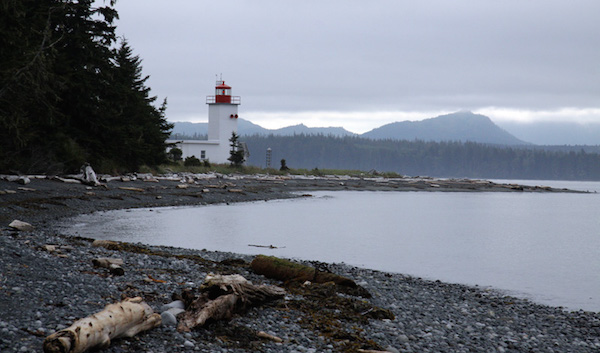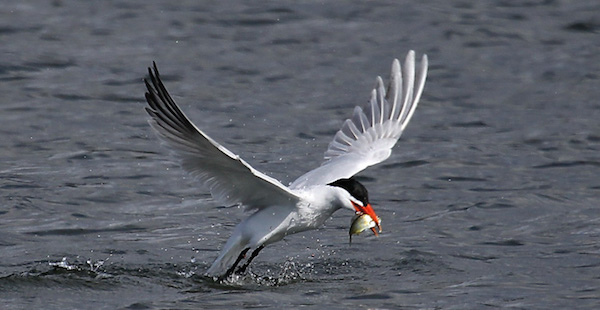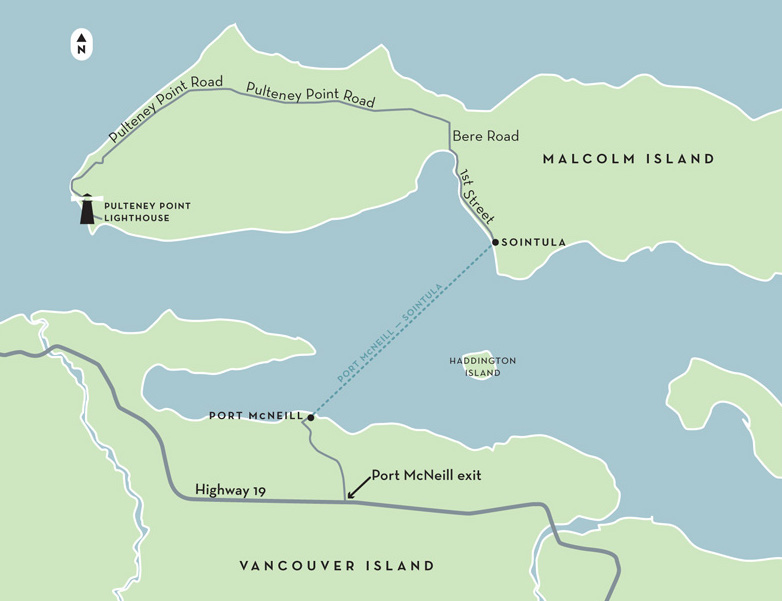


LAT 50˚37´49.9˝ N, LONG 127˚09´14˝ W
ACCESSIBILITY [2] Still Easy
GETTING THERE Getting to Pulteney Point is a cinch, though it requires a bit of a drive up Vancouver Island to Sointula on Malcolm Island. En route you will pass through enchanting little villages and some of the most beguiling coastal scenery in the world. It’s possible to drive right to the site.
On the trip up island to Pulteney Point, you will need to pass through Port McNeill. The village is not only famous for its whale-watching adventures, it’s also renowned for ocean kayaking and spelunking (caving), and it is the beginning of the forty-eight-kilometre hike to Cape Scott Provincial Park. You’ll need to stay in this magical little community, so you can catch the morning ferry to Sointula and Pulteney Point. Port McNeill boasts a campground, some fine B&Bs, and a hotel.
It’s only a forty-minute crossing to Sointula on Malcolm Island. Explore this co-operative-minded village with its museum, craft shops, and colourfully painted houses. To get to the lighthouse, find 1st Street and follow it north. Turn right at Bere Road, then turn left at Pulteney Point Road and follow it directly to the lighthouse. Park in the turnabout near the beach. A ten- to fifteen-minute walk will get you to the light station. Leaving your car in Port McNeill and taking your bicycling over to Malcolm Island (perhaps staying over in Sointula) is really the best way to go.
THE WEIRD Some light keepers, such as Arthur Gurney (Ballenas Island), left his post and went off to war, returning home unscathed. Others, like Robert Lally (Estevan Point), remained home at the station and faced a similar risk of enemy bombardment, though from the open sea. Pulteney Point Lighthouse would play a significant role in two world wars, but in November 1914 the seriousness of that danger first became patently clear. The Victoria Daily Colonist carried the following chilling message:
COASTAL LIGHTS ARE EXTINGUISHED.
The Western part of Broughton Strait is closed to navigation.
All vessels, whether north or south-bound, proceeding from Johnstone Strait to Queen Charlotte Sound, or vice versa, must pass through Weyman passage and Backfish Sound. Masters of vessels attempting to pass between Ellen Point and Pulteney Point are liable to be fired upon. The govt. has gained knowledge of hostile ships; all lights at Pulteney Point and Haddington Reef are discontinued as of Saturday, Nov 14.130
Germany had been quietly at war with Canada and its Allies since August 1914, but it was unlikely to pose a palpable threat to our isolated, empty northern coast. In fact, in those early months of World War I, it was felt that China and Japan posed a greater threat to our shores than did Germany, even though Japan itself declared war on Germany early on in the conflict.

left New lamp in the cupola. right Solar panel for the new light.
Britain had been systematically vacating its Esquimalt base since the early 1900s, so when war broke out, that process was simply accelerated. Canada had a navy (the same Department of Marine and Fisheries that oversaw light stations also oversaw the fledgling naval service), but it was real only on paper. British Columbia premier Richard McBride wasted no time in telling the British Press “that British Columbia had been left defenceless by the withdrawal of the Royal Navy.”131 Britain was adamant; the Royal Navy was needed in European waters, so Canada had better get its act together.
By mid-1914, it was known that two German heavy battleships, SMS Leipzig and SMS Nürnberg, were prowling about in the North Pacific, and German freighters were seen off BC waters, spying on Allied ship movements. Unguarded, the BC coast’s vast coalfields, huge fishing fleet, and natural harbours would have been war prizes of incalculable worth. Canada’s only battleship, the aging cruiser HMCS Rainbow, would, in 1916, become involved in aiding Russia’s plan to move billions in gold bullion to Vancouver and Ottawa via Vladivostok, just in case there was a revolution. Besides, submarines would soon be built in secret for the Russian navy at the British Pacific Construction and Engineering Company in Burnaby. With the threat of war looming, Pulteney Point Lighthouse had suddenly become strategically important.
THE NAME Pulteney Point Lighthouse is named after Sir Pulteney Malcolm, who joined the Royal Navy at twenty and quickly rose through the ranks to become an admiral. He served in the Mediterranean and was involved in the pursuit of the French fleet to the West Indies in October 1805. He returned October 24 and just missed joining Admiral Nelson at the Battle of Trafalgar by three days, but provided valuable assistance to many disabled ships. He also saved many Spanish sailors who found themselves blown into the water. Pulteney Malcolm met Napoleon Bonaparte, who said of him in 1816, “Ah, there is a man with a countenance really pleasing, open, intelligent, frank and sincere.”132 In 1846, Captain Gordon of HMS Cormorant honoured the life of Admiral Malcolm by naming the point and island after this brilliant and much-loved naval commander.
Prior to the arrival of white settlers, Pulteney Point, Malcolm and Cormorant Islands, and Alert Bay were Kwakwaka’wakw territory. However, an Indigenous legend foretold that the Malcolm Island would one day sink into the sea, so it was never permanently inhabited.133 In 1900, when a group Finns, unhappy with the hard, labouring life associated with Dunsmuir’s mines in Nanaimo, received Ottawa’s permission to settle on Malcolm Island and set up a co-operative, they petitioned Ottawa to provide them with a lighthouse. Ottawa complied.

Caspian tern with supper.
DESIGN AND CONSTRUCTION Early in 1905, Colonel William P. Anderson, Canada’s superintendent of lighthouses and designer of the famous flying buttress, gave the go-ahead for a series of light stations to be constructed down the length of the Inside Passage. Malcolm Island was at the top of the list. The spit at the western end of the island turned out to be the perfect location. Ships heading south from the expansive Pacific into Queen Charlotte Strait needed a clear warning to the approaches and dangers of the myriad islands and narrowing channels of Broughton Strait, through to Georgia Strait. In May 1905, Anderson appointed contractor George Frost (who built the lighthouses at Lucy Island, Cape Mudge, and Trial Islands) to build a lighthouse at Pulteney Point. It was to be a copy of the light station on Discovery Island.
The original light-station at Pulteney Point was a square wooden two-storey dwelling with a lean-to addition and a short tower and balcony protruding from its roof. The light was a seventh-order dioptric-lens lamp, which stood nearly twelve metres above the water and was visible northwards for some seventeen kilometres.
THE KEEPERS In 1900, Finnish writer and social activist Matti Kurikka was summoned from Australia to British Columbia to lead his countrymen away from Robert Dunsmuir’s brutal exploitation of miners in Nanaimo. From there, an opportunity arose to carve out of the wilderness a new community based on Kurikka’s utopian and religious ideals. Kurikka became the president of Kalevan Kansa (“people of Kaleva,” a figure from Finnish mythology). In 1901, he was joined by countryman August Mäkelä when the British Columbia government granted them land on unsettled Malcolm Island, which became the village of Sointula (meaning “a harmonious place”). Thus, a new experiment in communal socialism began.
But it wouldn’t last. Matti Kurikka’s notions about strict vegetarianism, the communal rearing of children, free love among the parents, the problems of clearing first-growth timber for arable land, and the inherent difficulties of making ends meet proved too difficult for many. Kurikka left, but not before Mäkelä saved them from imminent collapse.134
Within a few years, Sointula boasted some two hundred residents; a sawmill, blacksmith’s shop, foundry, and bakery; and the only Finnish-language newspaper in British Columbia. Though the social experiment at Sointula did eventually dissolve, a general store and revised co-operative movement began in 1909 and lasted through to the 1940s. In the early years, August Mäkelä supplemented his income by becoming Pulteney Point’s first light keeper.
At first, “Austin McKela” (as he was also known) did a fine job. Beyond keeping the light, he was given a hand-operated foghorn and told to ring it after approaching ships whistled for navigational assistance. Yet the winters on Malcolm Island were damp and cold, and McKela asked Ottawa for a wood stove. The service said no and suggested that that if he desired one he should acquire it himself.135
A succession of Finnish keepers kept the light at Pulteney Point until World War II. Along the way, a mechanical foghorn replaced the hand-operated one in 1915, and it was replaced with an compressed-air diaphone in 1931. Following the shelling incident at Estevan Point Lighthouse in 1942, the light at Pulteney Point was once again extinguished. The blackout might have thwarted enemy shipping, but it caused the 1942 grounding of the Alaska steamship Columbia on the beach right in front of the light.
The old tower was replaced with a circular reinforced-concrete one in 1943. Pulteney Point Lighthouse is considered a plum of a posting in that the keeper’s children could attend the local school and the lighthouse family could interact directly with the warm-hearted residents of Sointula. As of 2014, the station is still manned.
